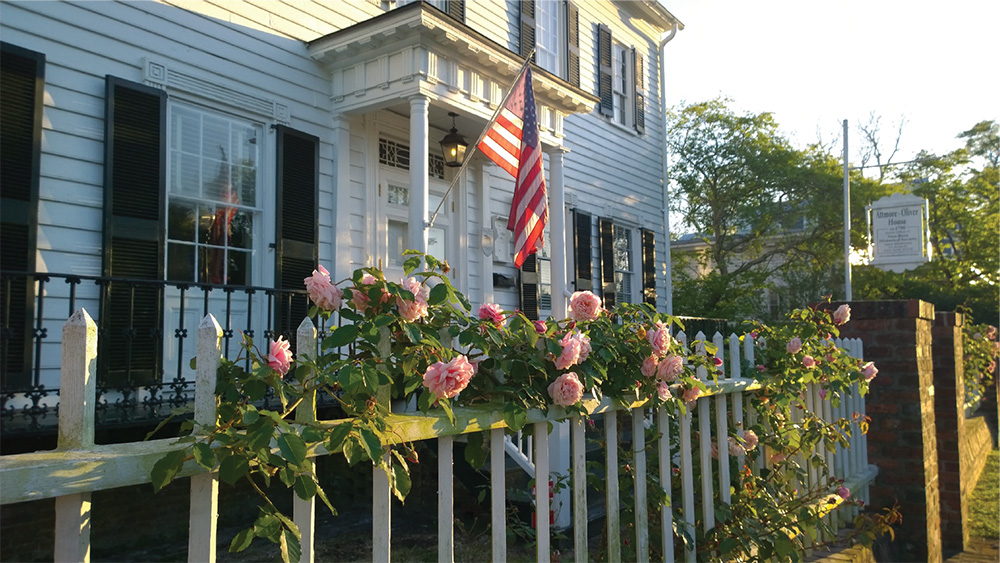The Night New Bern
"Switched-On" Christmas!
NBHS Historian/Claudia Houston
Have you ever wondered how we celebrated the holidays in the past compared to how we do so now? How did some of these traditions start in New Bern? Every year, a public tree is put up downtown, and a celebratory tree lighting takes place to which everyone is invited. Did you know that tradition began in 1913 when New Bern was the site of the first public Christmas Tree in North Carolina, lit by electric lights!
Electricity arrived in New Bern in 1899, and an upgraded city power plant, installed early in 1910, introduced electric streetlights, enabling evening shopping. In 1913, some merchants began using small “electric candles” in holiday windows, and trade reports confirmed an increase in nighttime foot traffic.
The Merchants Association proposed a way to bring together civic pride, holiday spirit, and electric light. Newspaper notices began to appear in mid-December. “A Public Tree for All the People.” It was announced that a lighting would take place on Christmas Eve at the intersection of Broad and Middle Street. The tree was erected on a temporary wooden stand and encircled by evergreens, bunting, and a simple fenced walkway to keep the crowd back from the wiring. Electricians from the city’s light plant worked for two days stringing the tree with dozens of small bulbs: clear, red, and green. Several papers emphasized safety precautions. Remember, this was all new to the public, a novel and exciting event.
At dusk on Christmas Eve, the streets were crowded. A small chorus assembled on the balcony of a nearby storefront, and the People's Concert Band, New Bern's newest musical organization, played at a curb. The Mayor, John A. McNair, and several members of the Merchants Association stood beside the platform at the base of the tree.

When the switch was thrown, the crowd, numbering thousands, let out a cheer. Children and adults were equally enthralled, as this was the first time they had seen an illuminated tree lit by electricity. One paper wrote that it was “a sight to quicken the heart” and noted that New Bern “entered the modern age with a glow fit for the season.” The audience's enthusiastic participation was a key element of the event.
The band played “Joy to the World” and “It Came Upon a Midnight Clear,” and after the carols, the mayor gave a short address praising the merchants' cooperative spirit and emphasizing that the tree belonged to everyone in New Bern, fostering a strong sense of community and togetherness.

The excitement continued as volunteers handed out small gifts and candy bags purchased by local businessmen who had promised that “no child will go home empty-handed.” In articles the next day, much praise was given not only to the Merchants but also to the clubs and societies that had participated, notably the City Beautiful Club.
The lighting of the public tree quickly became a New Bern tradition, and other towns in the state followed suit. It was widely accepted at the time and reinforced by local newspapers that New Bern was “the first city in North Carolina to present a public tree illuminated by electric light.” Research might question that claim, but it was the prevailing fact of the day.

The original tree is long gone, but the memory of lights — now modern displays — continues to draw families downtown during the holidays. The public tree tradition began a century ago, marking New Bern as a community willing to embrace progress while celebrating the ties that bind the town. It was, and is, a light that the whole city shares.


